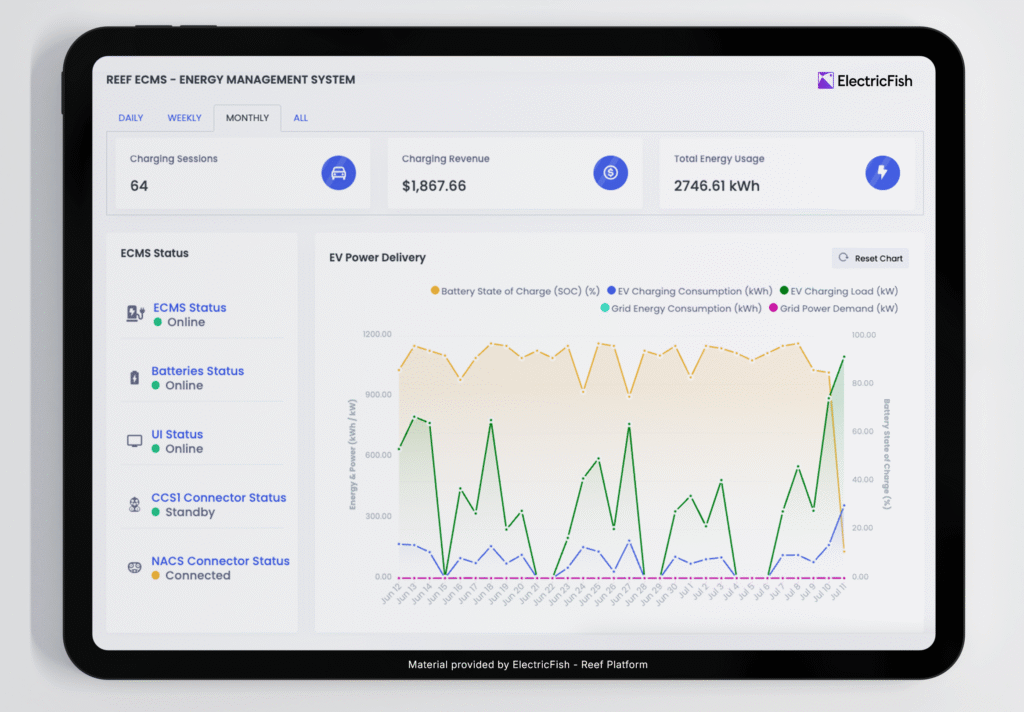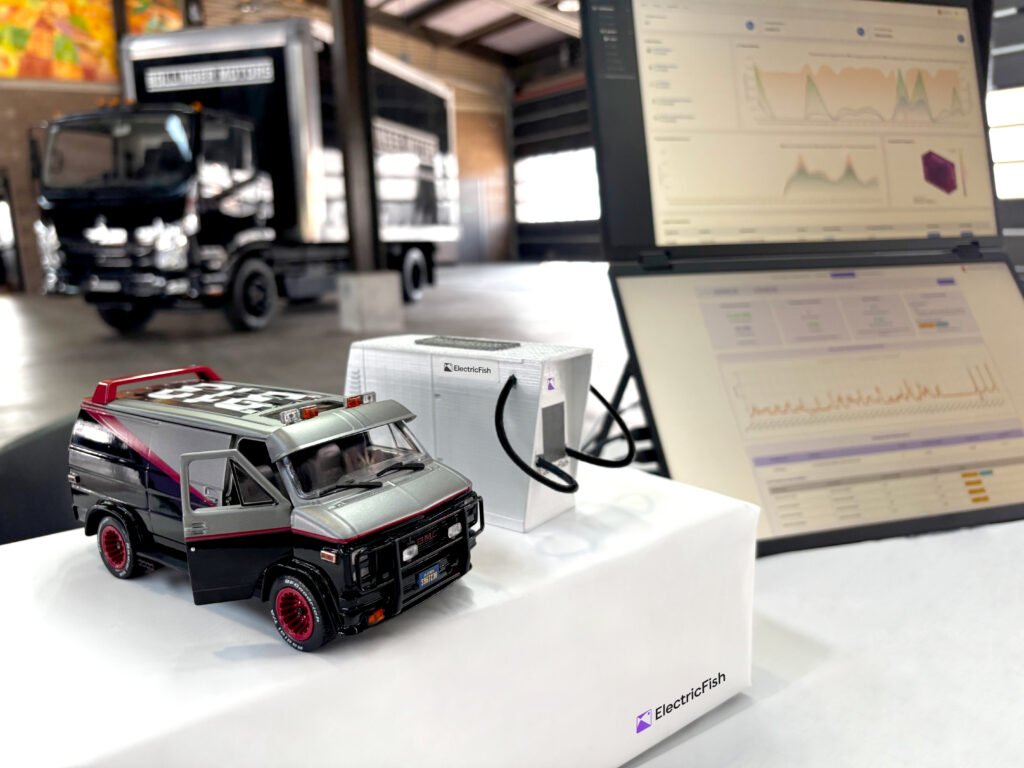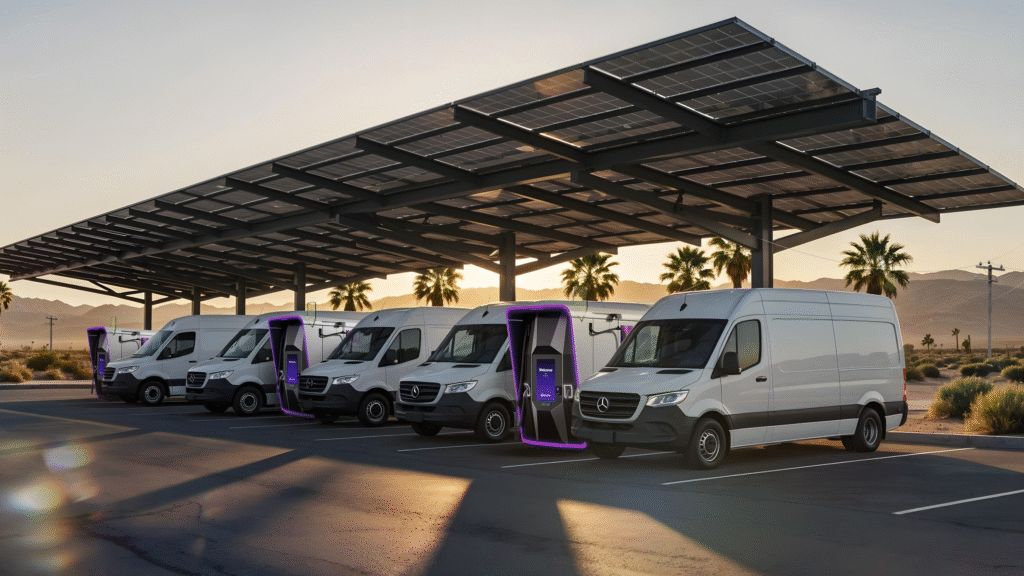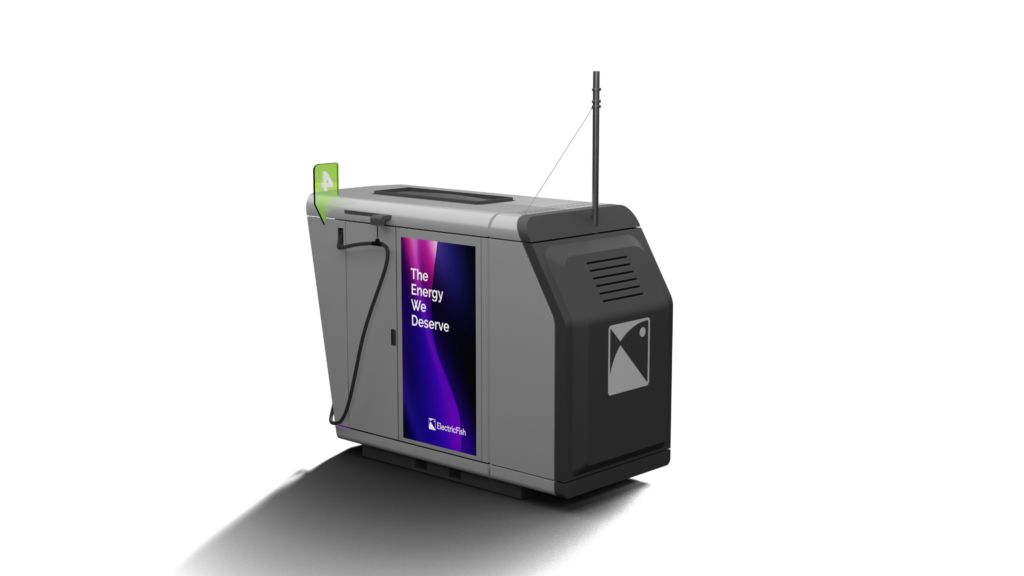Our energy landscape is undergoing a seismic shift. Electric vehicles (EVs), renewable energy, and extreme weather are pushing the grid in ways it was never originally designed to handle. In 2021, for example, a winter storm in Texas triggered cascading failures, leaving millions without power. Imagine if, during such an event, intelligent systems could instantly reroute power from batteries to where it’s needed, anticipate surges in demand, and prevent outages before they happen. This is no longer science fiction – it’s the promise of artificial intelligence (AI) and machine learning (ML) at the grid edge. Energy resilience is being redefined by AI/ML technologies that can think, adapt, and coordinate faster than any manual control room.
In this article, we explore how AI and ML are transforming grid-edge infrastructure and EV charging, and how ElectricFish is harnessing these tools through Stargazer, our advanced multi-agent framework. We’ll see why AI/ML matters for energy resilience, how multiple intelligent “agents” can optimize everything from battery use to EV scheduling, and what a future of adaptive, intelligent, decentralized grids might look like.
AI/ML for Energy Resilience
The electric grid has often been called the most complex machine ever built. Traditionally, keeping the lights on meant balancing a predictable supply and demand with centralized control. But today’s grid is anything but predictable. Renewable sources like solar and wind fluctuate with the weather, EV chargers can create sudden spikes in demand, and climate-induced extremes test the grid’s limits. In this dynamic environment, resilience – the ability to withstand and quickly recover from disruptions – requires a new level of intelligence.
AI and ML excel at finding patterns in complexity and making real-time decisions. In energy systems, this means:
Anticipating Problems: Machine learning can forecast events like demand peaks or renewable output dips with far more accuracy. For instance, Google’s DeepMind applied neural networks to wind farms to predict output 36 hours in advance, boosting the value of wind energy by about 20% through smarter scheduling. Such forecasting makes the grid more prepared and stable.
Optimal Decision-Making: AI can juggle multiple objectives simultaneously. While a human operator or simple controller might focus on keeping voltage stable, an AI can multitask – shaving peak loads, storing energy when it’s cheap, discharging when it’s needed, and coordinating hundreds of devices at once. The result is a grid that uses resources more efficiently and adapts instantaneously to disturbances.
Decentralized Control: Perhaps most importantly, AI enables decision-making to move out to the edges of the grid. Instead of only central operators calling the shots, edge devices (like smart batteries, EV chargers, or solar inverters) equipped with AI can respond to local conditions in real time. This distributed intelligence is crucial for resilience: if part of the grid goes down, the rest can autonomously reconfigure and island itself (operate independently) to keep critical power flowing.
In short, AI/ML is evolving the grid model from a rigid, one-way system into a flexible, self-healing network. It’s the difference between a static electric highway and a smart web of energy that reroutes and heals around problems. As Stem Inc.’s CEO recently noted, handling the “increasingly complex systems” of a renewable-rich grid and the “high volumes of interdependent decisions” needed to optimize it “can only be achieved with the power of AI-driven software.” AI is becoming the brain of the modern grid, and resilience is the big winner.
ElectricFish’s Approach: Intelligent, Adaptive Infrastructure
At ElectricFish, we fuse battery energy storage and EV charging into a compact, community-friendly solution. More than just hardware, each unit comes equipped with an AI-driven framework we call Stargazer. What does Stargazer do—and why does it matter?
Peak Shaving & Cost Savings
By detecting upcoming demand spikes, Stargazer instructs the battery to discharge strategically. This can significantly reduce demand charges, which often make up a large portion of commercial energy bills. In many scenarios, customers can see a noticeable drop in monthly costs—particularly in regions with high peak rates—while still meeting EV charging needs.
Backup & Resilience
In an outage, Stargazer autonomously switches to islanding mode, supplying critical loads and EV chargers from the on-site battery. This automatic backup can sustain essential operations for hours (depending on battery size and load), reducing costly downtime and ensuring community safety in extreme events.
Battery Health Preservation
Stargazer employs learning-based optimization to avoid overly aggressive cycling or high-temperature charging. This extends battery lifespan and lowers total cost of ownership. Instead of simply chasing short-term gains, the system balances usage and rest cycles to minimize wear and tear.
Grid Services Revenue
When local utilities offer DR incentives—paying participants to curtail load or feed power back—Stargazer seamlessly participates. By discharging the battery during DR events, sites can earn additional revenue or rebates, further improving payback on their energy investments.
Below is a snapshot of ElectricFish’s HQ load with and without our Stargazer intelligence applied. The orange line (“Without Battery”) represents the original load profile, while the pink line (“With Stargazer Battery”) shows how our AI-optimized charging and discharging strategy flattens demand spikes. This leads to lower costs, better peak management, and reduced strain on the broader grid.
Over time, Stargazer refines its decision-making, continuously learning how to optimize cost savings while preserving the battery for emergencies.
AI in the Wider Energy Industry
ElectricFish’s approach is part of a larger wave of AI adoption in the energy sector:
Google DeepMind uses advanced forecasts to optimize wind energy output.
Tesla has an automated platform that decides when its batteries should buy or sell energy.
Stem Inc. coordinates commercial batteries to respond to demand spikes, acting like a “virtual power plant.”
AutoGrid helps utilities integrate EVs and home energy systems so they collectively reduce strain on the grid.
All these efforts share one goal: enable fast, data-driven decisions to keep power reliable and affordable.
Building a Decentralized, Self-Healing Grid
In the bigger picture, AI-equipped devices like ElectricFish’s grid-edge stations create a more distributed and resilient energy system. Rather than rely exclusively on large central plants, neighborhoods can tap local resources. With enough smart nodes, the grid can:
- Anticipate Stress: Forecast demand or weather risks, adjusting automatically.
- Isolate Disturbances: If one area goes offline, others remain unaffected.
- Scale Efficiently: As more EVs appear or more batteries come online, the system learns to handle the added complexity.
This vision extends well beyond EV charging. Think microgrids, home batteries, rooftop solar—each acting intelligently and collectively forming an “Internet of Energy,” where electricity moves around as flexibly as data on the web.
A Brighter, Smarter Future
AI is ushering in a new era of proactive, automated resilience. Rather than waiting for crises to strike, intelligent edge systems like ElectricFish’s can spot trouble on the horizon, adjust operations instantly, and keep essential services powered. That means outages become smaller or shorter, while local networks remain stable—even if broader infrastructure falters.
As these solutions spread, the power grid will evolve from a static arrangement of poles and wires into a dynamic, self-orchestrating ecosystem. And whether you’re charging your EV at home or depending on local backup power during an extreme weather event, the benefits of AI-driven resilience will keep lights on, vehicles running, and communities safer—all while maximizing efficiency and sustainability. That’s the promise of smart energy in the 21st century, and ElectricFish is proud to be part of it—one intelligent charge at a time.
References
- DeepMind. Machine learning can boost the value of wind energy – Neural networks for wind power forecasting.
- Stem Inc. CEO on AI-driven storage optimization (Energy-Storage.news).
- Tesla Autobidder managing over 1.2 GWh of energy storage (Electrek).
- AutoGrid AI powers EV grid services (IoT M2M Council)
- ElectricFish Press Release.AI-Enabled Grid Power Bank for Resilient EV Charging (BusinessWire).
Written By, Abhishek Vinchure, Senior ML engineer




